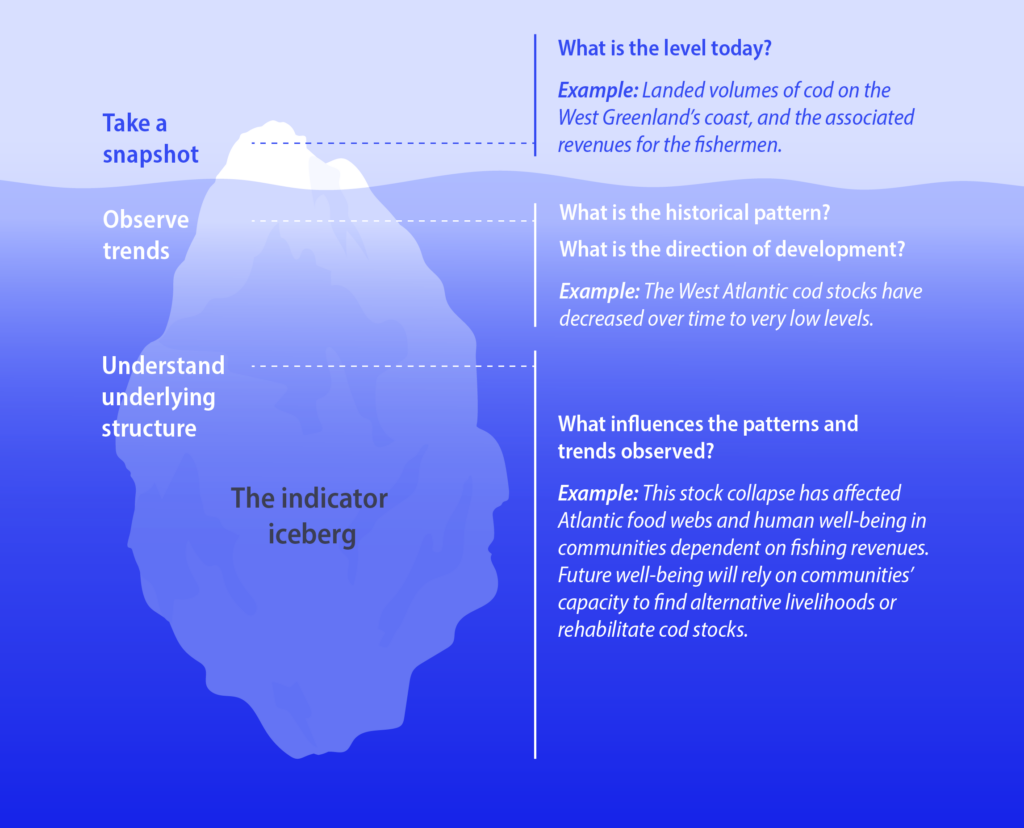Chapter 4
Indicators for People and Planet
We need better indicators to track real progress towards just futures for all people on a thriving planet. The new planetary reality, with interconnected climate and biodiversity crises unfolding, requires indicators that make explicit the human dependence on a well-functioning biosphere.
A multitude of indicators are currently used to track human well-being, measure economic progress or assess the sustainability impacts of investments. Many of these indicators include some environmental metrics, but across the range none fully account for and accurately capture the human pressures on the planet and their effects on human well-being. Failing to account for this is risky business for people, societies, and economies.
At best, indicators that do not capture the new planetary reality become irrelevant; at worst, they are dangerous, creating a false sense of progress and ignoring the continued detrimental impacts on nature and societies.
Indicators not only measure but also shape change and influence decision-making. Depending on what we measure we will tend to streamline our efforts to achieve relevant results. Therefore, we need to make sure we are asking the right questions.
The indicator iceberg (see figure) can be useful for understanding what different indicators account for. The tip of the iceberg represents a snapshot of reality that is seen today, (e.g., landed volumes of cod on West Greenland’s coast). The trends, underlying structure and accompanying values of that reality however, lie below the surface. Addressing them requires a deeper dive.
Click image to zoom in.
West Greenland’s cod fishing provides a case study in the human dimensions of ecosystem change. Observed outcomes reflect a high demand and price for cod and an insufficient governance capacity to maintain healthy stocks. Indicators that capture only landed volumes and economic value of cod would miss the health of the ecosystem providing benefits, and coastal communities’ economic dependence on the biosphere. Example is based on Hamilton et al. (2003).
The challenges facing humanity now require us to reconsider the indicators for human well-being, macroeconomic performance and financial risks. Such a reconsideration will include the following:
- Indicators for human well-being must acknowledge the underlying structures of pressures leading to the transgression of planetary boundaries and the resulting effects on well-being for current and future generations.
- Macroeconomic performance indicators must include the uncertainty in the dynamics of a living biosphere.
- Financial actors must recognise a wider set of planetary changes; develop impact accounting as a core part of capital allocation decisions; and support the open disclosure of environmental, social and corporate governance (ESG) data and criteria.
Deep dive: Embracing complexity in sustainability indices for investments
In their current format, ESG ratings, estimates of environment-related financial risks, and most of what is referred to as sustainable investment approaches are not able to address the root causes of sustainability problems – ratings may be precise but do not accurately capture the underlying structure of the problems.
If an ambition for finance is to help societies transform towards low-carbon economies with minimal impacts on the biosphere, then financial sector norms and practices need to change to become “more generally right”.
Keep scrolling to play animation.
Accounting for systemic risks will require including qualitative risk assessments, based on the direction of policy, technology and necessary consumer-behaviour changes. The risk to people and planet from biodiversity loss and the climate crisis is often hard to quantify because of uncertainty and system complexity. Scenario analyses, and resilience assessments are frameworks that allow for this and are inclusive of different kinds of knowledge and tools.

